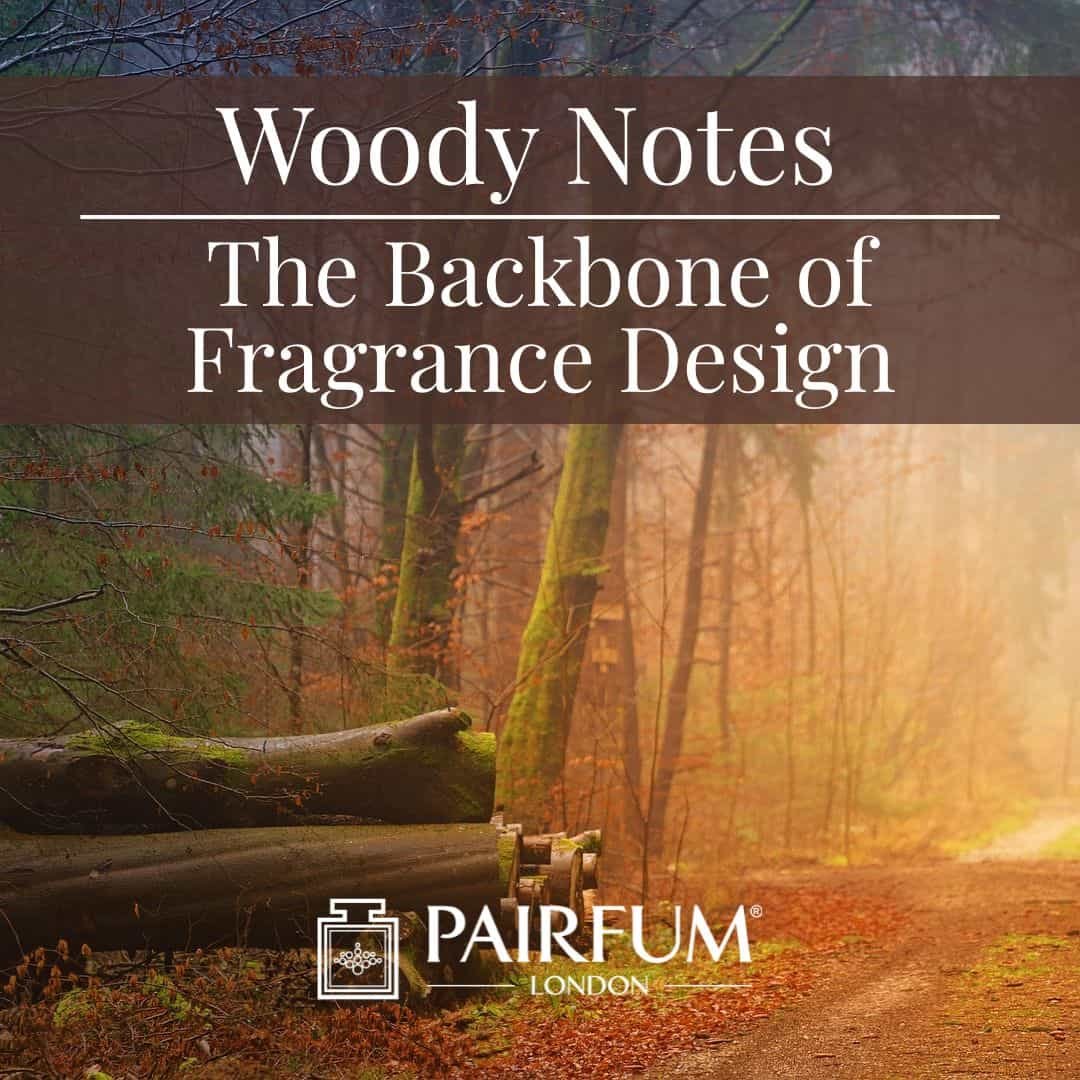Exploring Woody Notes in Perfumery

Woody notes are an essential part of many perfumes. They give a warm, earthy and robust quality that often forms the base of a fragrance. These notes can evoke the feeling of a walk through a forest or the comfort of a wooden cabin. They add depth and richness that are crucial for a well-rounded perfume.
Woody notes come in many forms, from classic sandalwood and cedarwood to exotic agarwood and vetiver. Each type brings its unique character to a fragrance, making it complex and intriguing. Understanding these notes helps one appreciate the craft of perfumery even more.
In this article, we will dive into the fascinating world of woody notes. We will explore their different types, how they are extracted, and their role in iconic perfumes. By the end of this journey, you will have a deeper understanding of what makes woody notes so special in the art of perfumery.
Understanding Woody Notes in Perfumery
Woody notes form the backbone of many perfumes. These notes are derived from various types of wood, roots and even some herbs. They provide a warm, earthy and sometimes balsamic aroma that anchors a fragrance. Woody notes are commonly found in the base notes of perfumes, giving them lasting qualities.
Characteristics of Woody Notes
Woody notes are often described as dry, warm and complex. They evoke natural landscapes and can bring a sense of elegance and sophistication to a perfume. Unlike floral or fruity notes, woody notes develop slowly on the skin, revealing their depth over time.
Common Woody Ingredients
Sandalwood: Smooth, creamy and slightly sweet, sandalwood is a classic woody note that adds richness to many perfumes.
Cedarwood: Known for its dry, sharp aroma, cedarwood brings a clean and sturdy quality to fragrances.
Agarwood (Oud): Rare and precious, agarwood offers a deep, resinous aroma that is highly valued in luxury perfumes. Oud wood is an iconic component of many intense woody perfumes.
Vetiver: Earthy and green, vetiver provides a smoky and woody touch, often used in masculine fragrances. It’s a key ingredient in building both woody aromatic and woody chypre accords.
Patchouli: With its earthy, musky quality, patchouli is a versatile woody note that can also add a touch of sweetness and spice.
Understanding these characteristics and ingredients helps in appreciating the complexity and beauty of woody notes in perfumery.


Different Types of Woody Ingredients and Accords
Woody ingredients in perfumery are diverse, each bringing unique olfactory experiences. These ingredients can be divided into various types, each with its distinct aroma profile.
Types of Woods
Hardwoods: These woods, like oak and mahogany, impart strong, long-lasting aromas. They are often used to create the foundation of a perfume and support the overall woody structure.
Softwoods: Examples include pine and fir, which provide fresher, lighter woody notes. Pine cone and pine bring a clean, crisp dimension to woody scents.
Exotic Woods: Rare woods like rosewood and ebony offer unique, rich aromas that add complexity and luxury. Guaiac wood, for instance, is smoky and smooth, often found in deeper, darker woody fragrances.
Accords Combining Woody Notes
Woody-Ambery: Combining woody notes with amber creates a warm, resinous accord. This blend is often used in oriental fragrances and brings out the richness of the wood.
Woody-Floral: Adding floral notes to woody bases creates balanced, sophisticated perfumes. Roses paired with sandalwood create a classic woody floral combination.
Woody-Spicy: Incorporating spices like cinnamon or cardamom with woody notes gives a warm, exotic character. This woody spicy accord is popular in autumn and winter fragrances.
Woody-Marine: Blending marine notes with woody ingredients results in fresh, invigorating perfumes that are perfect for daily wear.
Woody-Fruity: Combining woody and fruity notes introduces brightness and contrast, adding lift to the deeper base of a woody perfume.
Common Uses
Woody ingredients are used in various ways in perfumery:
– Base Notes: Most commonly, woody notes form the base of a perfume, providing depth and longevity. The base note is where woody notes often anchor the scent.
– Middle Notes: Some woody ingredients like vetiver are used in the heart of a fragrance to add complexity. These middle notes or heart notes bridge the transition between top and base.
– Top Notes: Softer woody notes like pine can be used in the top layer to give an immediate freshness.
Learning about these different types and accords enhances the understanding of how these notes shape the structure and experience of a fragrance.


Extraction Methods of Woody Notes
The extraction of woody notes involves various methods. Each method can impact the aroma and quality of the final product. Here are some common extraction techniques used for capturing woody aromas.
Distillation
Steam Distillation: This method uses steam to carry the aromatic compounds from wood. The steam is then cooled to separate the oil from the water. Sandalwood oil is often extracted using steam distillation.
Hydrodistillation: Similar to steam distillation, hydrodistillation immerses the wood in water before heating. This process is gentler and used for more delicate woody materials.
Solvent Extraction
Solvent Extraction: This technique uses solvents like hexane to dissolve the aromatic compounds in wood. The solution is then filtered, and the solvent is evaporated, leaving a concrete—a solid form of concentrated aromatic compounds.
Supercritical CO2 Extraction: This modern method uses supercritical carbon dioxide as a solvent. It is efficient and produces high-quality extracts without leaving harmful residues.
Other Methods
Maceration: Wood materials are soaked in a solvent, usually alcohol, to extract their aromatic compounds. This method is slower but effective in capturing complex aromas.
Cold Pressing: Typically used for softwoods, cold pressing involves mechanically pressing the wood to release its oils. This method preserves the natural aroma without heat damage.
Each extraction method has its benefits and is chosen based on the type of wood and the desired quality of the aroma. These methods ensure the rich, nuanced notes that are essential for perfumery.
Iconic Perfumes Featuring Woody Notes
Woody notes have shaped some of the most iconic perfumes. They add a timeless appeal and a sense of stability, making these fragrances memorable and enduring.
Classic Woody Perfumes
Woody perfumes often become classics due to their complexity and longevity. Mossy wood and dry wood notes lend structure and warmth to these time-honoured creations.
Modern Woody Fragrances
Contemporary compositions continue to embrace the woody fragrance family, blending it with floral note accents, fruity notes and musk to create gender-neutral and innovative designs.
Unisex Woody Scents
Unisex perfumes featuring woody leather, woody fruity, and woody aromatic profiles highlight how the woody scent can be both versatile and inclusive. Musk, resin and cedar notes often round off these compositions with a feeling of warmth and sophistication.


Expanding the Olfactory Palette: Notable Accents and Influences
To further enrich a fragrance, perfumers often layer woody notes with intriguing elements that lend additional character and complexity. These combinations enhance the heart notes of a composition, creating multi-dimensional scents that evolve beautifully over time.
The Role of Tonka Bean and Oriental Notes
Tonka bean is a commonly used ingredient that adds warmth and softness to woody bases. With its sweet, slightly nutty aroma, it harmonises beautifully with sandalwood, vetiver and cedarwood, softening the sharp edges of dry woody accords. When paired with oriental notes such as amber, vanilla and spices, tonka bean contributes to the luxurious depth often found in sensual and long-lasting woody perfumes.
Oriental notes, known for their opulent and spicy characteristics, work exceptionally well in woody fragrances. These elements often sit within the heart notes and base, blending with woods to form rich, enveloping scents that captivate the senses.
The Power of a Floral Note in Woody Perfumes
While woody scents are traditionally seen as earthy or masculine, introducing a floral note can completely transform the profile. A single floral note such as rose, jasmine or iris can add elegance, freshness or softness to the composition. This is especially true in woody floral blends, where the strength of wood meets the delicacy of blossoms to create refined and balanced perfumes.
Celebrated Interpretations in Perfumery
Though this guide focuses on the structure and elements of woody fragrances rather than specific brands, it’s worth noting how certain renowned creations have embraced these complex combinations.
For instance, Tam Dao has become emblematic of sandalwood’s velvety depth, capturing its creamy and serene character with precision. Meanwhile, Serge Lutens is often celebrated for his mastery of warm, resinous woody notes paired with oriental nuances, offering fragrances that are bold, mysterious and timeless.
Maison Margiela, known for crafting evocative scent stories, has used woody and floral notes to recreate moments and atmospheres, bridging memory and olfaction. Similarly, Yves Saint Laurent has long explored the interplay between woody and oriental notes, creating layered perfumes that exemplify both modernity and tradition.
These compositions illustrate how woody fragrances can transcend time, genre and gender, making them a staple of olfactory artistry.
Discover the Warmth of Spiced Rum Lime and Guaiac Wood
For those who appreciate the depth and complexity of woody notes, this fragrance masterfully combines the crisp zest of lime with the smoky richness of guaiac wood. The subtle warmth of spiced rum adds an unexpected twist, creating a woody perfume that is both vibrant and comforting. It’s an excellent example of how a woody scent can balance freshness with resinous depth.
Spiced Rum, Lime & Guaiac Wood Eau de Parfum – by Pairfum London
This eau de parfum features a carefully crafted blend where the woody aroma of guaiac wood takes centre stage, enhanced by citrusy lime and the gentle spice of rum. The composition unfolds with aromatic woods and musk, offering a sophisticated and warm scent profile that lingers beautifully on the skin. Ideal for anyone seeking a distinctive woody perfume note with both character and elegance.


Conclusion
Woody notes play a vital role in the world of perfumery. From their complex aromas to their longevity, these notes form the foundation of many beloved fragrances. They offer depth, warmth, and sophistication, making them a timeless choice for perfumers.
Understanding woody notes involves exploring different types of woods, their unique characteristics, and the methods used to extract their rich aromas. This knowledge helps in appreciating the artistry behind each bottle of perfume.
Iconic fragrances featuring woody notes highlight the versatility and appeal of these ingredients. They range from classic compositions to modern masterpieces, each telling its own fragrant story.
If you want to explore the world of these notes further, consider the rich tapestry of woody perfumes, from those featuring aromatic woods to those that blend woody spicy or woody fruity accords. The woody family continues to evolve, celebrating warmth, resin, musk, and sophistication, anchored by staples like cedar, sandalwood, and vetiver. Whether it’s the dry woody freshness of pine or the deep richness of oud wood, woody notes remain a cornerstone of elegant and enduring fragrances.
